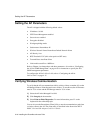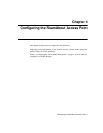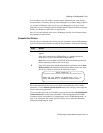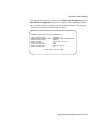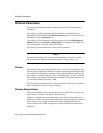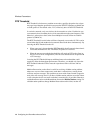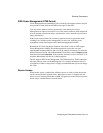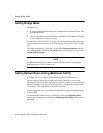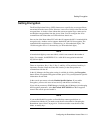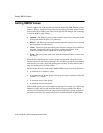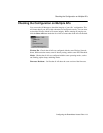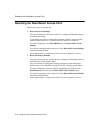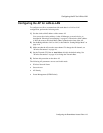Wireless Parameters
4-8 Configuring the RoamAbout Access Point
RTS Threshold
RTS Threshold, also known as medium reservation, specifies the packet size, where
messages larger than the specified size must use the RTS/CTS (Request to Send/Clear
to Send) protocol. The default value, 2347, effectively turns off the RTS Threshold.
In a wireless network, only one wireless device transmits at a time. Each device can
sense transmissions from other devices in its network that use the same frequency. This
behavior is referred to as the Carrier Sense Multiple Access/Collision Avoidance
protocol (CSMA/CA).
The RTS Threshold is useful when collisions frequently occur at the AP. This can be
caused when the AP and another device transmit data to each other simultaneously. By
lowering the RTS Threshold on the AP:
• When a message is shorter than the RTS Threshold, the AP transmits data when it
senses that the medium is free. The RTS/CTS protocol is not used.
• When the message exceeds the threshold, the AP sends an RTS to the client (or
AP in a LAN-to-LAN configuration). The AP waits until the device responds with
a CTS message.
Lowering the RTS Threshold imposes additional network overhead that could
negatively affect the throughput performance. Therefore, you should only lower the
RTS Threshold when the wireless network experiences frame collisions and lost
messages.
Medium Reservation on the client is useful for resolving a hidden station problem,
where two or more clients cannot sense each other’s transmissions, causing frame
collisions and lost messages. This problem can occur with clients located at opposite
ends of the AP coverage area. If you have a hidden station problem, move the clients
or AP so that the devices can sense each other’s transmissions, if possible. Otherwise,
set Medium Reservation on the RoamAbout client to the Hidden Stations setting. For
a hidden station problem, change Medium Reservation on the client, not the AP.



